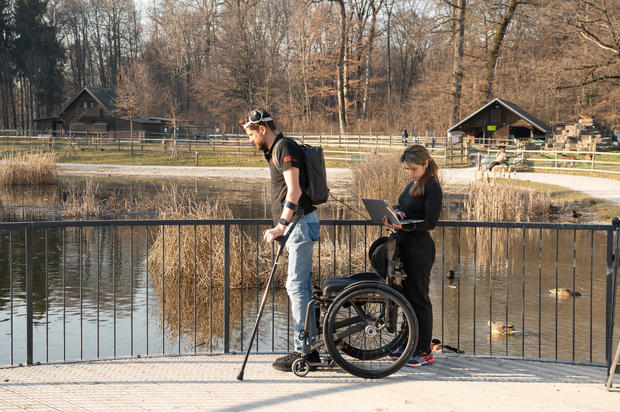Paralyzed man walks again using implants connecting brain with spinal cord
A 40-year-old man whose legs were paralyzed in a cycling accident 12 years ago can walk again thanks to implants in his brain and spinal cord.
The brain-spine interface (BSI) has remained stable for a year, allowing Gert-Jan Oskam to stand, walk, climb stairs and traverse complex terrains, according to a study published Wednesday in the journal Nature. Oskam even regains some control over his legs when the BSI is turned off.
"My wish was to walk again and I believed it was possible," Oskam said during a news briefing.
Oskam was in the accident in China and thought he would be able to get the help he needed when he got home to the Netherlands, but the technology wasn't advanced enough for it at the time, Oskam said.
Oskam previously participated in a trial by Grégoire Courtine, a neuroscientist at the Swiss Federal Institute of Technology who also worked on the new research, according to the study authors. In 2018, Courtine's team found that technology can stimulate the lower spine and help people with spinal-cord injuries walk again. After three years, Oskam's improvements plateaued.
For the latest study, the research team restored communication between Oskam's brain and spinal cord with a digital bridge. Oskam participated in 40 sessions of neurorehabilitation throughout the study. He said he is now able to walk at least 100 meters (328 feet) or more at once, depending on the day.
"We've captured the thoughts of Gert-Jan, and translated these thoughts into a stimulation of the spinal cord to re-establish voluntary movement," Courtine said.
Researchers said the next advancement would be to miniaturize the hardware needed to run the interface. Currently, Oskam carries it in a backpack. Researchers are also working to see if similar devices can restore arm movement.
There have been a number of advancements in spinal cord injury treatment in recent decades. A study published in Nature in February found that targeted electrical pulses delivered to the spinal cord can help improve arm and hand movement after a stroke.
The researchers who helped Oskam believe the technology they've employed can, in the future, restore movement in arms and hands as well. They also think that, with time and resources, they can use the advancement to help stroke patients.




